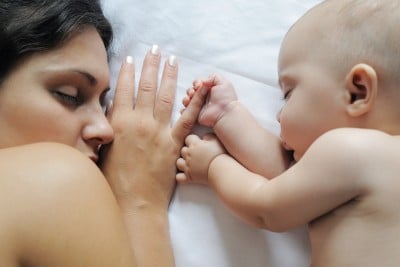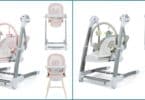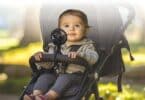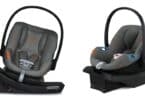Sudden Infant Death Syndrome (SIDS) is the leading cause of death of infants between one and 12 months. In fact, more than 2,000 infants die of the condition in the United States, each and every year. Though the actual “cause” is unknown, a new study now suggests that the biggest risk factor in such deaths is bed-sharing.
Published in Pediatrics, the journal of the American Academy of Pediatrics (AAP) study assessed the sleep-related deaths of infants from 24 states between the years of 2004 and 2012. In total, there were 8,207 deaths analyzed. Information was obtained via the National Center for the Review and Prevention of Child Deaths.
While SIDS is most common among infants between 1 and 4 months of age, the American Academy of Pediatrics says that infants can die from SIDS all the way up until one year of age. However, the risks can vary by age, they say, which is why they divided their study into two case types – infants that died between the ages of 0-3 months, and infants that died after 4 months of age.
According to the researchers, 69% of all infants were bed-sharing when they died.
In more detail, the younger infants were more likely bed-sharing or sleep on an adult bed, or near a person, when they died (73.8%) than older infants (58.9%). Older infants, however, were more likely to be found prone to objects like blankets or stuffed animals at the time of their deaths.
Researchers say that this study shows that sleep-related death factors really do differ for younger and older infants, and parents should “be warned about the dangers of these specific risk factors appropriate to their infant’s age.”
Furthermore, they say that parents should reduce the risks by following recommendations for safe sleeping environments – placing baby on a firm mattress, covered by a fitted sheet that meets safety standards; not placing infants in adult beds, chairs, sofas, waterbeds, pillows, or cushions to sleep; keeping the crib free of toys, blankets, comforters, stuffed animals, bumper pads, and soft bedding; placing the crib in a smoke-free area; and using safe sleep clothing, like sleepers, sleep sacks and wearable blankets.
The AAP also says that parents should place the crib in the room with them, whenever possible. Parents should also consider sleeping temperature (not letting baby get too hot and dressing baby lightly for sleep), and they should always lay their baby on his or her back to sleep.
Mothers should also avoid alcohol and tobacco use during pregnancy, and after (especially when breastfeeding). Unnecessary medications should also be avoided.
Parents should also clearly outline their guidelines for sleeping with anyone that will be caring for their child. In fact, about 1 out of every 5 infants die when in the care of someone other than their parents. Generally, this is due to a caregiver placing the baby on their tummies, when parents do generally follow the ‘back to sleep’ rule; this is known as “unaccustomed tummy sleeping.”
Tummy time is important, the AAP says – it aids in strengthening neck muscles, eventually helping baby roll over, push up and crawl. But this should only be during playtime, and when the baby is supervised.
Related Articles:








I have read a great book by Robert S. Mendelsohn M.D.
How to Raise a Healthy Child in Spite of Your Doctor, best book ever in which it mentions vaccines that can cause SIDS, which they had studied since the 80’s. Sleeping away from out babies increAses SiDS worse because people are tired and try to feed their baby on the couch and kill them, another thing is that babies get dropped. So I will keep bed sharing, my baby is healthy and strong. Vaccines are poison never studied on infants.